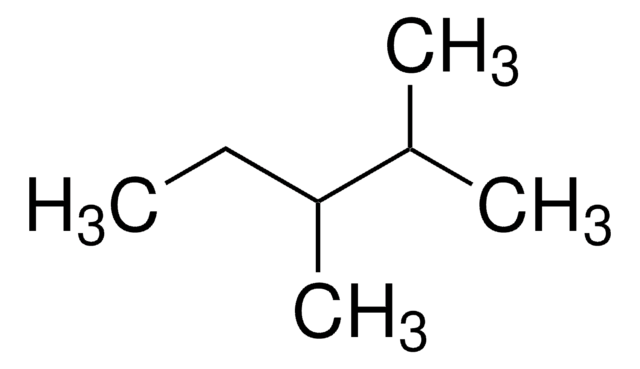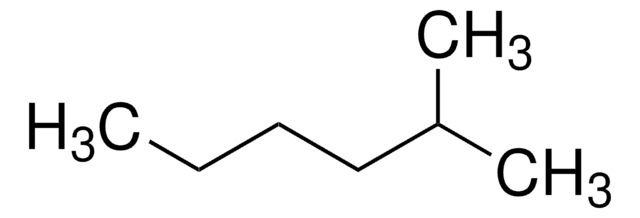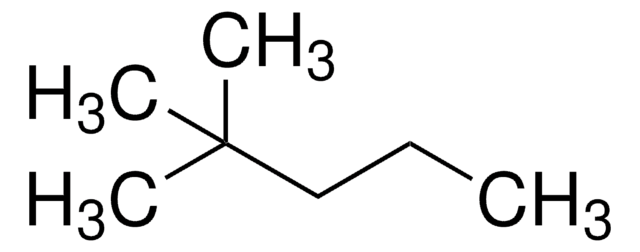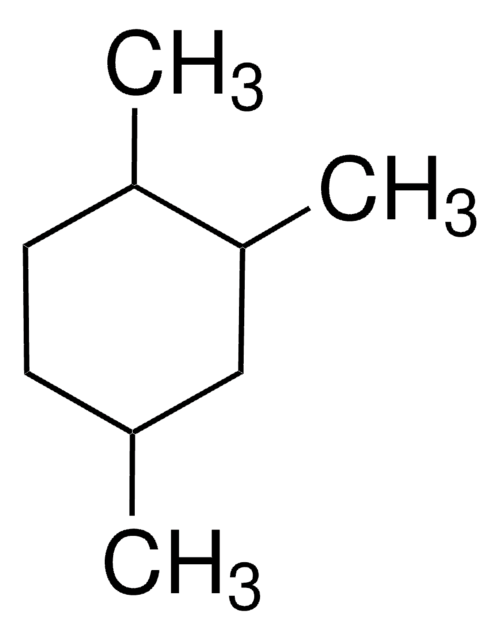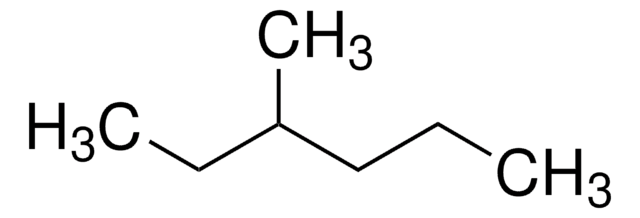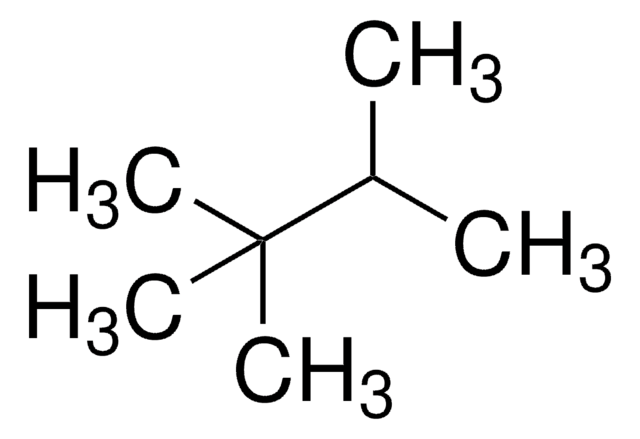All Photos(1)
About This Item
Linear Formula:
CH3(CH2)3CH(CH3)CH(CH3)2
CAS Number:
Molecular Weight:
128.26
MDL number:
UNSPSC Code:
12352100
PubChem Substance ID:
NACRES:
NA.22
Recommended Products
Quality Level
Assay
98%
form
liquid
refractive index
n20/D 1.409 (lit.)
bp
140 °C (lit.)
density
0.726 g/mL at 25 °C (lit.)
SMILES string
CCCCC(C)C(C)C
InChI
1S/C9H20/c1-5-6-7-9(4)8(2)3/h8-9H,5-7H2,1-4H3
InChI key
WBRFDUJXCLCKPX-UHFFFAOYSA-N
General description
2,3-Dimethylheptane is a branched saturated aliphatic hydrocarbon. It is one of the isomer of nonane. Henry′s law constant (solubility) of 2,3-dimethylheptane has been analyzed using characteristic and counting polynomials. Its standard heat of formation, combustion and vapourization at 25°C has been calculated.
Storage Class Code
10 - Combustible liquids
WGK
WGK 3
Flash Point(F)
195.8 °F - closed cup
Flash Point(C)
91 °C - closed cup
Choose from one of the most recent versions:
Already Own This Product?
Find documentation for the products that you have recently purchased in the Document Library.
Customers Also Viewed
Heats of Formation, Combustion, and Vaporization of the 35 Nonanes and 75 Decanes.
Labauf A, et al.
Journal of Chemical and Engineering Data, 6(2), 261-263 (1961)
Characteristic and counting polynomials: modelling nonane isomers properties.
Jantschi L, et al.
Molecular Simulations, 35(3), 220-227 (2009)
Heidi Birch et al.
Chemosphere, 174, 716-721 (2017-02-17)
During simulation-type biodegradation tests, volatile chemicals will continuously partition between water phase and headspace. This study addressed how (1) this partitioning affects test results and (2) can be accounted for by combining equilibrium partition and dynamic biodegradation models. An aqueous
Protocols
This application demonstrates the suitability of the Petrocol column for the efficient analysis of hydrocarbons as listed in ASTM method D5134.
Our team of scientists has experience in all areas of research including Life Science, Material Science, Chemical Synthesis, Chromatography, Analytical and many others.
Contact Technical Service